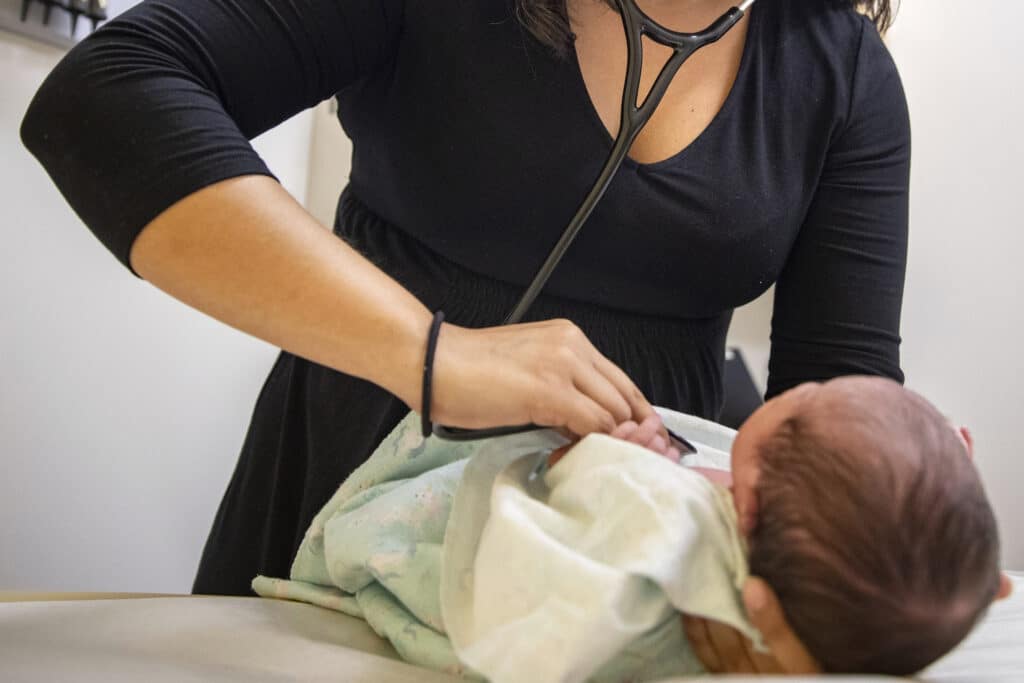Flawed guidelines linking race to risks for urinary infections and newborn jaundice, have been followed for years by the American Academy of Pediatrics, which is now putting those guidelines under a microscope looking to abandon that wrong kind of thinking and treatments. A re-examination of AAP treatment recommendations that began in 2020, intensified after doctors in the academy were concerned that Black youngsters have been undertreated and overlooked. As reported by the AP:
The influential academy has begun purging outdated advice, it is committing to scrutinizing its entire catalog, including guidelines, educational materials, textbooks and newsletter articles
For years, pediatricians have followed flawed guidelines linking race to risks for urinary infections and newborn jaundice. In a new policy announced Monday, the American Academy of Pediatrics said it is putting all its guidance under the microscope to eliminate “race-based” medicine and resulting health disparities.

A re-examination of AAP treatment recommendations that began before George Floyd’s 2020 death and intensified after it has doctors concerned that Black youngsters have been undertreated and overlooked, said Dr. Joseph Wright, lead author of the new policy and chief health equity officer at the University of Maryland’s medical system.
The influential academy has begun purging outdated advice. It is committing to scrutinizing its “entire catalog,” including guidelines, educational materials, textbooks and newsletter articles, Wright said.
“We are really being much more rigorous about the ways in which we assess risk for disease and health outcomes,” Wright said. “We do have to hold ourselves accountable in that way. It’s going to require a heavy lift.”
Dr. Brittani James, a family medicine doctor and medical director for a Chicago health center, said the academy is making a pivotal move.
“What makes this so monumental is the fact that this is a medical institution and it’s not just words. They’re acting,” James said.
In recent years, other major doctor groups including the American Medical Association have made similar pledges. They are spurred in part by civil rights and social justice movements, but also by science showing the strong roles that social conditions, genetics and other biological factors play in determining health.
Last year, the academy retired a guideline calculation based on the unproven idea that Black children faced lower risks than white kids for urinary infections. A review had shown that the strongest risk factors were prior urinary infections and fevers lasting more than 48 hours, not race, Wright said.
A revision to its newborn jaundice guidance — which currently suggests certain races have higher and lower risks — is planned for this summer, Wright said.
Dr. Nia Heard-Garris, head of an academy group on minority health and equity and a pediatrician at Chicago’s Lurie Children’s Hospital, noted that the new policy includes a brief history “of how some of our frequently used clinical aids have come to be — via pseudoscience and racism.”
Whatever the intent, these aids have harmed patients, she said.
“This violates our oath as physicians — to do no harm — and as such should not be used,” Heard-Garris said.
Dr. Valerie Walker, a specialist in newborn care and health equity at Nationwide Children’s Hospital in Columbus, Ohio, called the new policy “a critical step” toward reducing racial health disparities.
The academy is urging other medical institutions and specialty groups to take a similar approach in working to eliminate racism in medicine.
“We can’t just plug up one leak in a pipe full of holes and expect it to be remedied,” said Heard-Garris. “This statement shines a light for pediatricians and other healthcare providers to find and patch those holes.”
By LINDSEY TANNER Medical Writer






